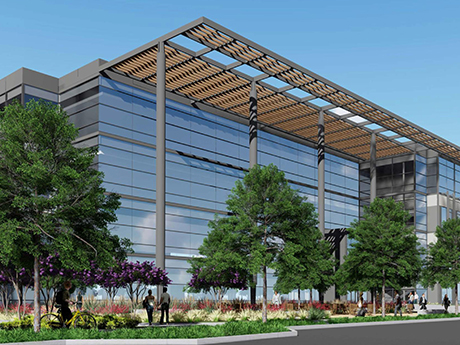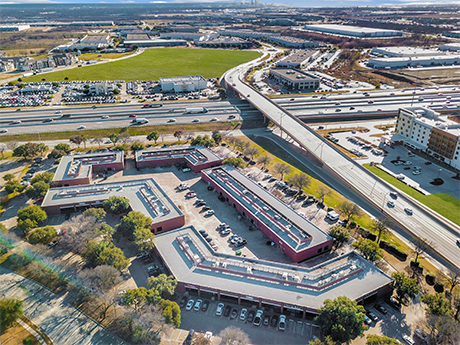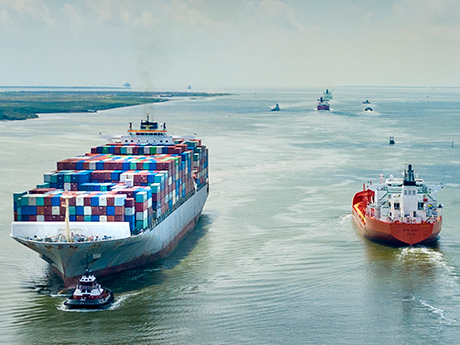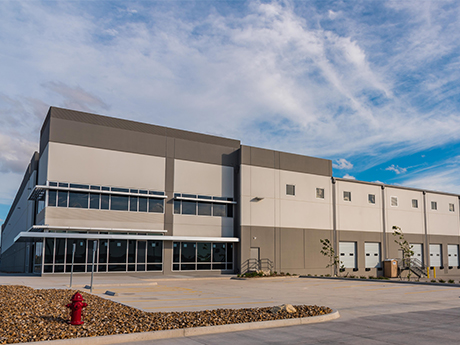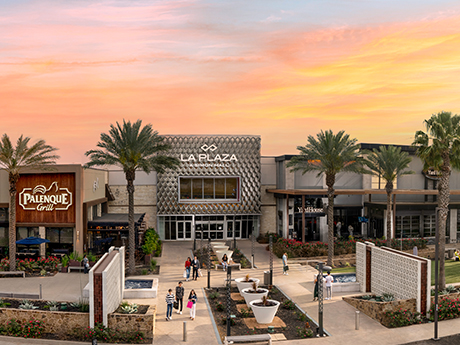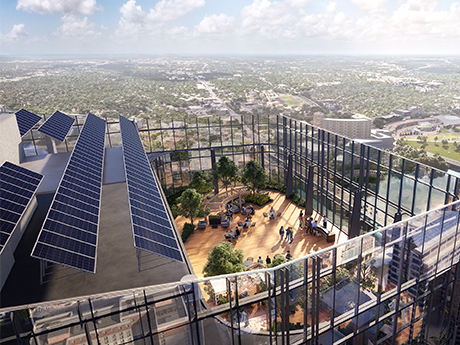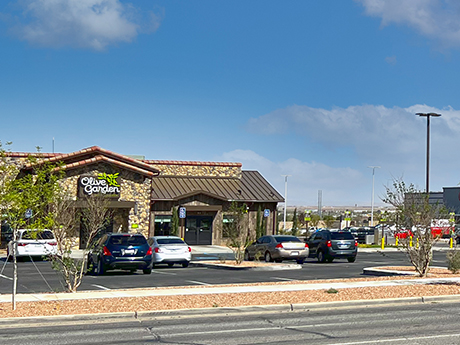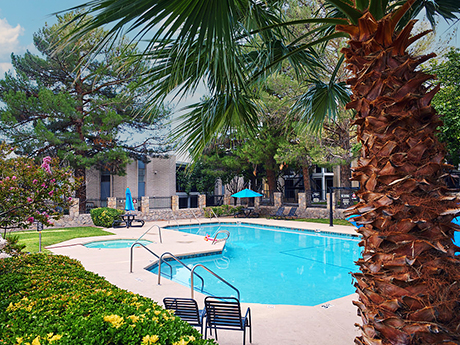By Marshall Mays, vice president, Colliers Dallas-Fort Worth (DFW) is a hot market for commercial real estate right now, with people from across the country relocating to the area every day. The metroplex’s population is growing at an annual rate that rivals those of other top U.S. markets, including Austin, its neighbor to the south that is often considered to be a more glamorous city. With the increasing number of businesses relocating to Texas and more offices opening back up, the urban core of Fort Worth has become a particularly popular destination for industry growth in Texas. The Market Today The performance of Fort Worth’s office market has been particularly encouraging since the start of 2021. Overall, the city’s office vacancy rate currently stands at 13.3 percent, down from a pandemic-era high of 14 percent in the third quarter of 2020. This positive trend is aided by a quicker “return to office” in DFW. According to research from Kastle Systems, a security company that provides access control systems for office buildings around the globe, Texas as a whole has outpaced major cities and other states in terms of the speed and degree to which office occupancy rates have been recouped. …
Texas Market Reports
By Al Silva, senior managing director, investments, Marcus & Millichap; and Ford Braly, first vice president, investments, Marcus & Millichap The multifamily segment in Fort Worth is in a great position. The metro’s vacancy rate slid down to a multi-decade low of 3.1 percent last year, which facilitated stellar rent growth as the number of available rental units plummeted. Fort Worth’s average effective rent grew more than 15 percent in 2021 to $1,276 per month, and the elevation in 2022 is expected to remain in the double digits. Behind this momentum is robust household formation as citizens relocate to the metro for greater job availability, cost-of-living considerations and quality of life. An average of 16,300 new households were created annually in the Fort Worth metro area over the past decade, and the 2022 addition is expected to eclipse that benchmark by about 20 percent. This rate of household creation is about twice as fast as the national pace and is happening at a time in which the barriers to homeownership have rapidly intensified, pushing much of the new demand toward the rental segment. Barriers to Homeownership The median price of a single-family house in the Fort Worth area climbed to …
By Jason Baxter, president and CEO, Fort Capital While some might think that industrial warehouses are overflowing with e-commerce tenants, in Fort Worth, we have seen another tenant mix grow at an even more rapid pace: service providers. These are the plumbers, landscapers and electricians that work behind the scenes to keep cities running. With population growth skyrocketing in Fort Worth, the industrial space needed by these service providers is also growing at a rapid rate. According to the U.S. Census Bureau’s latest population estimates, Fort Worth’s population increase was the third-largest in the country between 2019 and 2020, a period during which the city added more than 19,000 new residents. This increase allowed Fort Worth to jump from No. 13 to No. 12 in terms of the largest U.S. cities based on population. We often forget that population growth at this scale impacts all facets of real estate — housing, office, entertainment, industrial. Each of these uses requires various types of service providers to maintain. Fort Worth and similar fast-growing markets do not have enough space to support this growing segment of the tenant base in addition to the e-commerce and logistics users that have become the face of …
By Taylor Williams If ever there was a time to start a commercial real estate story with a line about how everything’s bigger in Texas, a 2022 update on Port Houston’s activity would surely be it. For that really is the case in and around Houston’s economic engine. The various pieces of infrastructural groundwork that the port began laying over the last decade-plus in anticipation of expanded activity are seeing heavier utilization. The channel itself, its shores lined with 900-ton cranes, are being deepened (from 45 to 46.5 feet) and widened (from 530 to 700 feet) at accelerated paces to accommodate the ever-growing volume of cargo passing through the port. And with the forward progress of all these projects and initiatives comes healthy demand for bigger industrial tracts to develop and spaces to lease. “We’re simply in a different place now than we were a decade ago,” says John Moseley, Port Houston’s chief commercial officer. “At that time, not everybody was convinced that Houston would become a massive import hub. But we saw demographic changes and felt that as a marine terminal operator, we controlled our own destiny. So we invested in our infrastructure and economic development to attract distribution …
By Paige Suvalsky, field research manager — Central Texas, CBRE; Rob Burlingame, senior vice president — Central Texas, CBRE; and Miller Hamrick, Texas industrial & logistics research lead, CBRE CBRE Research recently profiled Austin and San Antonio as an “emerging” industrial market along the Interstate 35 corridor in Central Texas. This region makes up much of the western portion of the “Texas Triangle”, a mega-region on a global scale that had an economic output of $1.5 trillion in 2021 and a population of just over 20 million people. The Texas Triangle represents a top 25 global economy, just ahead of Spain. The northern apex of the Texas Triangle, Dallas-Fort Worth (DFW), is projected to surpass Chicago by 2034-2035 to become the third-most populous urban region in the United States with a population of 9.4 million. This massive boom in population and business is driving the current rush to Central Texas and pushing regional and national developers to stake their claims in this growing market. Currently, about 5.5 million people live between the stretch of Texas from Laredo to Georgetown, and this area’s population is expected to grow by 10.8 percent over the next five years. According to data from the …
By Brad Frisby, director of land acquisitions, Rhodes Enterprises Demand for housing of all types continues to outpace supply in the Rio Grande Valley (RGV), and developers’ best efforts to add much-needed product throughout the region appear to be reaching a crescendo. Like the rest of the country, residential development in the RGV has been stymied and exacerbated by global supply chain disruption over the last year. Nor have developers in the region been spared from the pricing volatility of key construction materials, from basic building blocks like lumber and steel to more precise pieces such as air conditioning units and kitchen appliances. These factors, along with rising labor costs generated by the reheating of the regional economy, have negatively impacted conventional multifamily construction timelines and budgets over the past 12 to 18 months. While traditional single-family projects have not been hit nearly as hard as their multifamily counterparts, the net result of all this activity has been a widening of the gap between housing supply and demand. Though the regional vacancy rate for multifamily product is up on a year-over-year basis — about 4.5 percent today versus 3.5 percent at the end of the first quarter of 2021 — …
By Randy Summers, vice president, CCIM, CPM, Davis Equity Realty “Y’all come” is the message being sent to developers, retailers, franchisees, quick-service restaurants, corporations and manufacturers from the Rio Grande Valley (RGV) region of Texas — and all these users seem to be heeding the call. The local economy seems to be hitting on all cylinders, albeit with constraints on labor and supplies, as well as rising costs. The four counties that statistically make up the RGV — Hidalgo, Cameron, Starr and Willacy — combine to produce a regional population of over 1.4 million and a workforce population of over 485,000. While COVID-19 continues to have lasting effects on labor, the Small Business Administration reported that the Lower Rio Grande Valley District, which serves 14 counties, had 44,471 Paycheck Protection Program (PPP) loans approved totaling $2.4 billion. Of that, 71 percent were loans for the RGV’s four counties representing 59 percent of the dollar amount, or $1.4 billion. That is a considerable amount of money that was pumped into the local economy and doesn’t include the $64.6 million in grants provided to restaurants through the Restaurant Revitalization Fund out of the American Rescue Plan Act. Year-to-date sales tax revenue provided …
Interviews by Taylor Williams The office markets of the major Texas cities have always been birds of different feathers, built to accommodate drastically different types of users and disproportionately subject to broader swings in occupancy and rent growth. Dallas-Fort Worth (DFW) remains the king of corporate relocations and regional consolidations, and the metroplex’s office market benefits from the highest degree of diversity among users, an attribute that has ushered it through the darkest days of the COVID-19 pandemic. Meanwhile, the Houston office market, hobbled for years by its reliance on energy users, may finally be poised to see some growth in occupancy as prices of these commodities head for the moon. In Austin, the non-California tech capital of the country, the supply of office space is still playing catch-up to demand, as evidenced by the healthy rents these buildings have achieved during the state capital’s ascendance to major-market status. And San Antonio? Like most commercial asset classes in the Alamo City, the performance of the office sector is steady, offering neither the glamorous appeal of trophy buildings with marquee users that attract institutional investors nor the profound cyclical dips that scare them away. Yet after two years of prolonged disruption …
By Andy Moreno, director of operations, MIMCO; and McGee Sauls, senior vice president, MIMCO Historically, the El Paso market has often been overlooked, primarily due to its distance from other major Texas markets. However, that sentiment is shifting rapidly due to strong economic and population growth. While an accurate figure is difficult to pin down, the number of new entries and expanding franchises within the market has exploded in recent years. “As recently as 2015, national and regional operators were only beginning to recognize the sales potential of the El Paso market and just how underserved the growing population had become,” states Scott Walker, president of MIMCO. “Competition was limited, which led to advantages for existing operators. The landscape shifted dramatically due to the pandemic; since the second quarter of 2020, new retail categories have become active,” he continues. “Marketing quality sites generally leads to multiple offers from competing operators including car washes, lube shops, coffee shops and quick-service restaurants. We love to see this variety move into our market and drive competition for the next great location.” Market competition is advantageous and a key driver of innovation. Retailers use competition to discover and adopt the most efficient processes that …
By Jack Stone, senior director of investments, Greysteel It seems like every month there’s a new sales record being broken in the El Paso multifamily market. But with interest rates officially rising, how long will that streak last? El Paso has been on a tear. Greysteel has sold roughly 4,000 units there in the past 36 months. That’s an impressive number, but it’s not a surprising one. Between 2012 and 2014, roughly 20 properties over 25 units traded in El Paso. That number skyrocketed to 69 properties between 2019 and 2021. But why? We’ve followed the El Paso market closely and have brought numerous first-time, out-of-state buyers to the market. The No. 1 reason they’re interested in El Paso is the competitiveness of other markets like Dallas and Austin, where cap rates have just compressed too much. With lower cap rates and cash-on-cash returns, investors started flocking to secondary markets where they can achieve higher yields. But El Paso, while a secondary market, has several factors that help it stand out from the rest: (1) it’s one of the top 20 largest cities in the country, which comes as a surprise to many; (2) it’s well-diversified, having weathered the recession …


